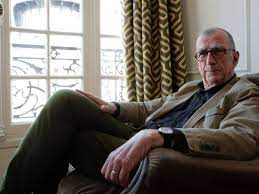1/ Eric Voegelin’s short essay of 1960, 'Ersatz Religion: The Gnostic Mass Movements of our Time', remains a crucial text for our understanding of contemporary political ideology and political theology. 

2/ As he doe throughout his work, Voegelin deploys what he calls an 'Aristotelian method' to put before our eyes a ‘historical phenomenon’, only then proceeding to analysis and definition (p.61). 

3/ By ‘Gnostic mass movement’, Voegelin does not necessarily mean to imply a specific political movement, but rather an ‘intellectual’ movement: he cites 'progressivism, positivism, Marxism, psychoanalysis, communism, fascism, national socialism’ (p.61) as varied examples. 

4/ For Voegelin, characteristics of the Gnostic attitude are as follows. First, man experiences a pervasive spirit of general dissatisfaction & discontent with his contemporary situation in the world. 

5/ Next, this is attributed not to theological anthropology per se (ie. a Christian doctrine of sin), but to a faulty ‘order of being’ or even, as Voegelin calls it, ‘that the world is poorly organised’. It is assumed that salvation from this faulty ‘order of being’ is possible.
6/ The crucial Gnostic move is then this: it is preached that salvation will come in history. This contrasts with "the Christian solution that the world throughout history will remain as it is and that man’s salvational fulfilment is brought about through grace in death" (p.64). 

7/ From there, the lock is set. This salvation will come via ‘human action’ and ‘man’s own effort’ (p.65). And the Gnostic thus comes forward as the ‘prophet’ (p.65) of the ‘formula’ by which this process can be enacted and achieved. This is ersatz religion/ political theology.
8/ For Voegelin, then, all Gnostic movements are thus involved in the project of abolishing the constitution of being, with its origin in divine, transcendent being, and replacing it with a world-immanent order of being, the perfection of which lies in the realm of human action. 

9/ Voegelin's conceptualisation of Gnosticism is at points superficial, & certainly conceptual, but by not means shabby - it sets the tone for the subsequent political theologies of Latour, Neyrat, Sloterdijk & Agamben, & various radical orthodoxy texts of the last two decades. 



• • •
Missing some Tweet in this thread? You can try to
force a refresh






















